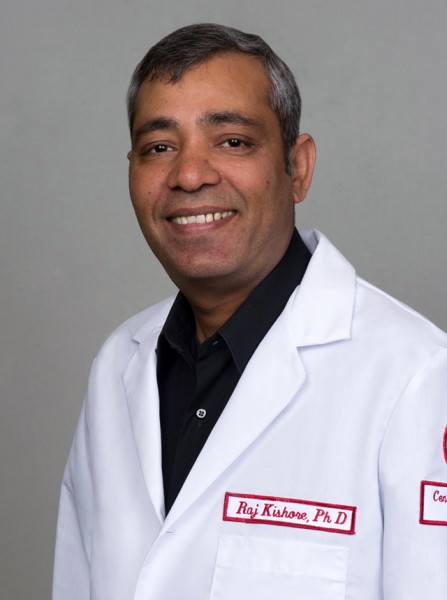Temple Scientists Use Hydrogen Sulfide to Restore Stem Cell-Mediated Blood Flow in Ischemic Limbs of Diabetic Mice
 Hydrogen sulfide is a noxious gas, but in the human body it serves important functions as a gaseous signaling molecule. Among those functions is to protect the tone and cell function of blood vessels, which according to scientists at the Lewis Katz School of Medicine at Temple University (LKSOM) could prove critical in preventing limb amputation in patients with diabetes, a major complication of which is a painful reduction in limb blood flow known as critical limb ischemia (CLI). In a new study, the researchers are the first to show in diabetic animals that induced hydrogen sulfide production in bone marrow stem cells can effectively repair vessel tone and limb circulation.
Hydrogen sulfide is a noxious gas, but in the human body it serves important functions as a gaseous signaling molecule. Among those functions is to protect the tone and cell function of blood vessels, which according to scientists at the Lewis Katz School of Medicine at Temple University (LKSOM) could prove critical in preventing limb amputation in patients with diabetes, a major complication of which is a painful reduction in limb blood flow known as critical limb ischemia (CLI). In a new study, the researchers are the first to show in diabetic animals that induced hydrogen sulfide production in bone marrow stem cells can effectively repair vessel tone and limb circulation.
“Chronic exposure to high blood sugar causes a loss of vessel tone and decreased blood flow, leading to limb amputation or even death,” explained Raj Kishore, PhD, Professor of Pharmacology and Medicine and Director of the Stem Cell Therapy Program in the Center for Translational Medicine at LKSOM and senior author on the new study, published online September 22 in Circulation, Journal of the American Heart Association. “To avoid losing the limb, patients can undergo bone marrow stem cell therapy, which helps grow new blood vessels in the damaged limb.”
However, whereas nondiabetic patients generally experience long-term benefits from stem cell therapy for CLI, in which a patient's own bone marrow cells are injected directly into the affected limb, the procedure works only transiently in diabetic patients. “It was unclear why stem cell therapy frequently fails in diabetic patients,” Dr. Kishore said. “We thought it might be related to hydrogen sulfide, since earlier work had shown that hydrogen sulfide levels are reduced in diabetics, but the mechanistic link was missing.”
To determine whether hydrogen sulfide deficiency predisposed diabetic stem cells to abnormalities that undermine their function, Dr. Kishore and colleagues isolated bone marrow cells from nondiabetic and diabetic mice and examined the cells for differences in levels of hydrogen sulfide-synthesizing enzymes. They found that protein levels of an enzyme known as cystathionine gamma-lyase (CSE) were significantly decreased in diabetic bone marrow cells, accounting for the animals' hydrogen sulfide deficiency.
The researchers then introduced the CSE gene into bone marrow cells isolated from diabetic mice to induce CSE overexpression and injected the cells back into the animals. The treatment resulted in dramatic improvements in blood vessel formation and blood flow. Remarkably, simple dietary supplementation with a hydrogen sulfide donor compound likewise restored hydrogen sulfide levels and improved limb circulation, enabling partial limb rescue. Blood flow was further increased when the special diet was combined with conventional stem cell therapy for CLI.
The new study now gives researchers two paths to exploring potential therapies for the restoration of blood flow in the limbs of diabetic humans. “We've figured out the mechanistic aspects,” Dr. Kishore said. “The data so far suggest that dietary supplementation with a hydrogen sulfide donor could be a simple treatment for human patients, though cell engineering with CSE could also be important.”
Studies in larger animals are needed to determine whether the findings by Dr. Kishore's team hold true. If they do, clinical trials to test dietary hydrogen sulfide supplementation or bone marrow cell modification in human diabetics may not be far behind.
Other researchers on the study include Zhongjian Cheng, Venkata Naga Srikanth Garikipati, Emily Nickoloff, Chunlin Wang, Jibin Zhou, Cynthia Benedict, Mohsin Khan, and Suresh K. Verma at the Center for Translational Medicine, LKSOM; Joseph E. Rabinowitz in the Department of Pharmacology and Center for Translational Medicine, LKSOM; and David J. Polhemus and David Lefer in the Department of Pharmacology & Experimental Therapeutics and Cardiovascular Center of Excellence at Louisiana State University Health Sciences Center, New Orleans, LA.
The research was supported in part by National Institutes of Health grants HL091983, HL053354, and HL126186 and American Heart Association grant SDG16390004.
